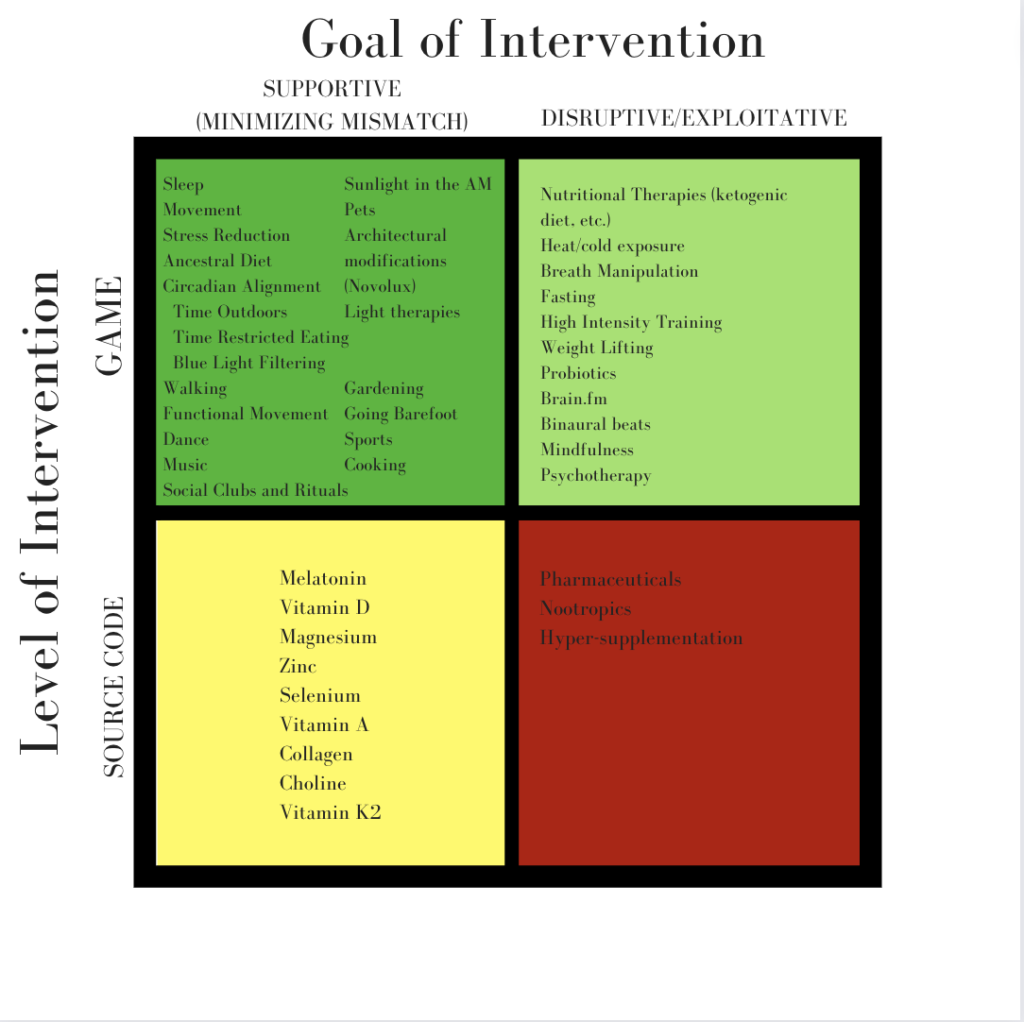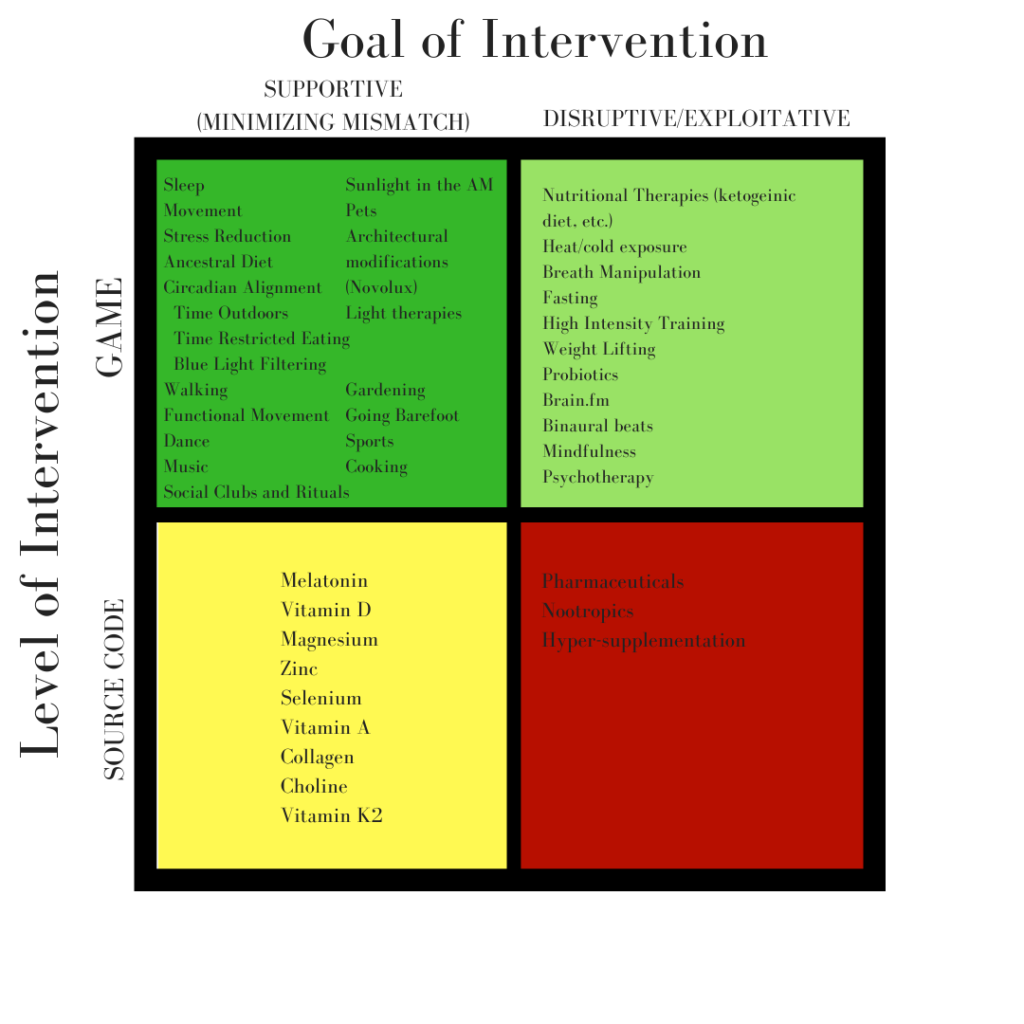The 4 Quadrant Model (the Ancestral Health therapeutic paradigm)
Below is the 4-Quadrant Model that describes the Ancestral Health paradigm for health and therapeutics, which characterizes health interventions in terms of their level of biological action and their impact on a biological system (for further discussion of the origins of the model, see the post “How To Win At Angry Birds“).
On the vertical are “game level” and “source code” interventions.
Game level interventions are “evolutionarily familiar” – i.e. they act at the level of evolutionary forces, or the range of environmental inputs we’ve been adapting to over the course of human evolution.
Source code interventions are “evolutionarily novel,” acting at a level with which we have no evolutionary experience. This is typically at the level of biochemical mechanisms via molecular targets.
On the horizontal are “supportive” and “disruptive or exploitative” interventions.
Supportive interventions are ones that activate or amplify something the body is already trying to do (the “physiologic status quo”), promoting the optimal conditions for the maintenance of intact physiologic functioning.
Disruptive interventions are ones that disrupt the physiologic status quo, altering and “overriding” the default physiology, presumptively because the disrupted state is preferable (e.g. insulin for a Type 1 diabetic). Exploitative interventions exploit an existing physiologic process to achieve a particular goal.
According to the ancestral paradigm for health and therapeutics, our prioritization for interventions in each quadrant would be 1 > 2 > 3 > 4, unless there is direct head to head evidence that an intervention in a higher numbered quadrant is superior for achieving a particular objective.
The Quadrants
Note that interventions in Quadrant 1 are aimed at minimizing mismatch between our present and our ancestral environment.

Examples
Below are examples of interventions for each quadrant.
